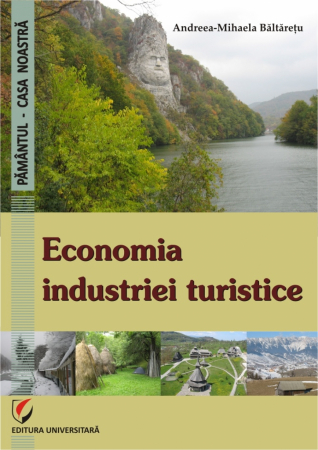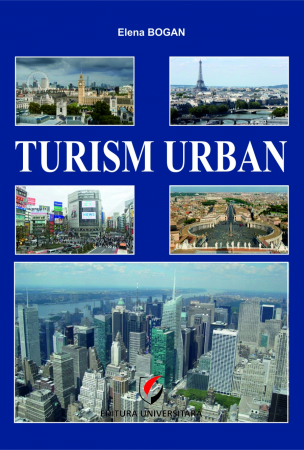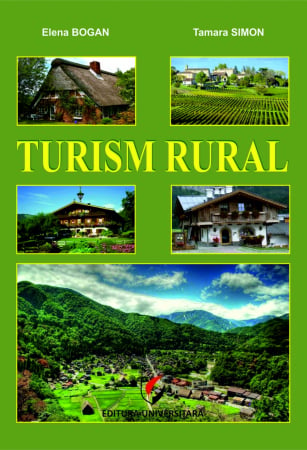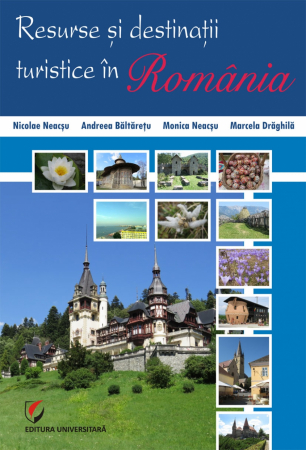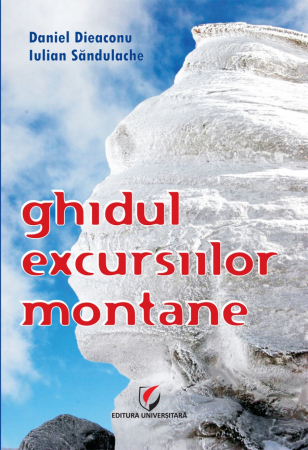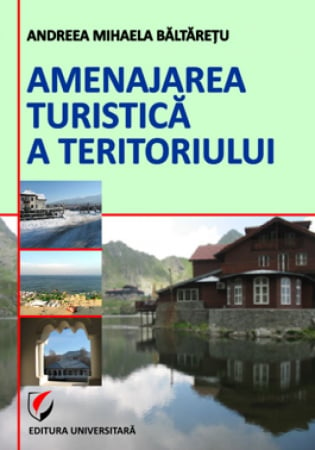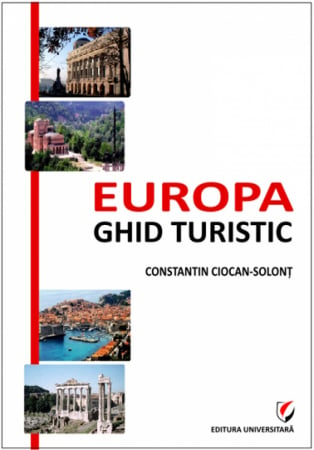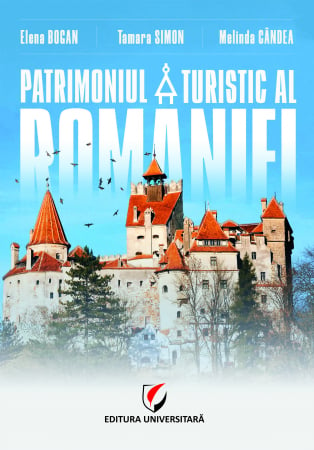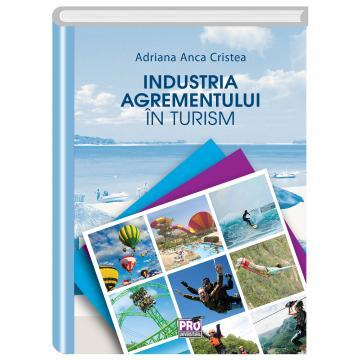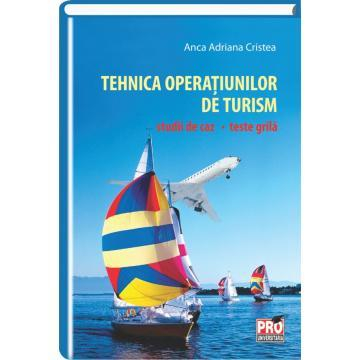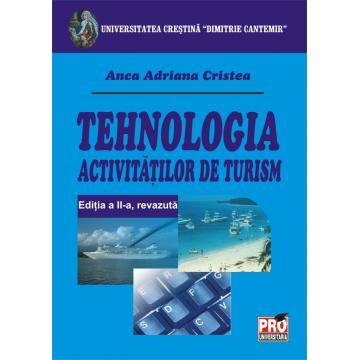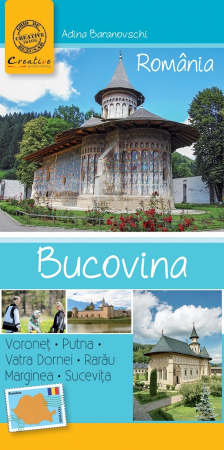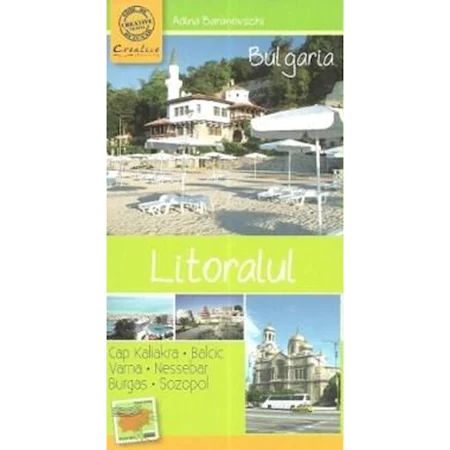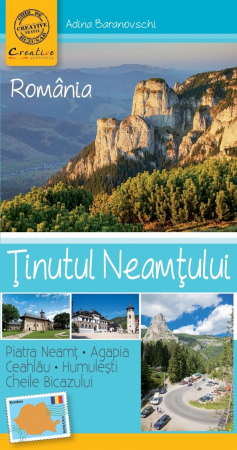ISBN: 978-973-749-856-4
Publisher year: 2010
Edition: I
Pages: 388
Publisher: Editura Universitară
Author: Andreea-Mihaela Baltaretu
- Description
- Download (1)
- Authors
- Content
- More details
- Reviews (0)
The manual addresses in its content a wide range of issues related to the particularities of the planning process and urbanism. As a whole, the paper is constituted as a didactic support elaborated on the basis of the analytical programs of the course and the thematic of the seminars from the disciplines “Tourist arrangement of the territory” and “Development and urban planning”.
-
Amenajarea turistica si dezvoltarea urbana
Download
PREFACE / 5
CHAPTER 1. LAND PLANNING / 11
1.1. Terminology and definitions / 11
1.2. The process of spatial planning at European level / 12
1.3. Spatial planning in a national context / 15
CHAPTER 2. TOURIST ARRANGEMENT OF THE TERRITORY / 22
2.1. Introductory elements / 22
2.2. Forms and characteristics of tourist arrangements / 25
2.3. The methodology of the tourist arrangement of the territory / 27
2.4. Principles of arranging tourist areas / 36
CHAPTER 3. CITIES AND ARRANGEMENT SPACE / 40
3.1. Genesis of cities / 40
3.2. Etymology, definitions, components / 43
3.3. The relationship between the arranged space and the city / 44
3.3.1. The typology of cities and their mode of evolution / 46
3.3.2. National network of localities / 60
3.3.3. The problem of space in urban development. Sustainable development of cities / 63
3.4. The metropolitan development of Romania / 66
CHAPTER 4. TOURIST ARRANGEMENT OF COASTAL AREAS / 72
4.1. Current characteristics of seaside tourism / 73
4.2. The stages of arranging the coastal areas at international level / 74
4.2.1. Pioneering Phase / 74
4.2.2. The beginning of mass tourism / 74
4.2.3. Contemporary explosion / 75
4.3. The arrangement of the Romanian coast / 75
4.4. Blue Flag Program / 80
4.5. Criteria for authorizing beaches in Romania for tourism purposes / 85
4.6. Ways of degradation and protection of the coast / 87
4.7. Models of tourist arrangement of the seaside / 88
CHAPTER 5. TOURIST ARRANGEMENT OF THE BATHROOM AREAS / 91
5.1. Trends in spa tourism at national and international level / 92
5.2. Health tourism / 93
5.3. The typology of the main spas in Romania by profile. Positive and negative aspects / 97
5.4. Types of clientele of spas and its characteristics / 99
5.5. Models of tourist arrangement of spa areas / 100
CHAPTER 6. TOURIST PLANNING OF MOUNTAIN AREAS / 103
6.1. Stages of development of mountain tourism / 103
6.1.1. Initial phase / 103
6.1.2. Transition phase / 104
6.1.3. The great development phase / 104
6.2. Mountain areas policy / 104
6.3. Environmental protection in mountain areas / 105
6.4. Classification of altitude resorts / 105
6.5. Mountain tourism in Romania / 107
6.6. The characteristics of the clientele of the mountain resorts / 124
6.7. Models of tourist arrangement of mountain areas / 124
CHAPTER 7. ARRANGEMENT OF PROTECTED AREAS / 127
7.1. General considerations regarding the advantages of practicing tourism in protected areas / 127
7.1.1. Negative effects of tourism on protected areas and methods of administration / 130
7.1.2. Creating a balance between positive and negative effects / 136
7.2. Definitions, classifications and the need to establish protected areas / 137
7.3. Areas of activity with influence on protected areas / 142
7.4. Protected areas worldwide / 147
7.5. Protected areas in Romania / 151
7.6. Practicing sport hunting inside protected areas / 160
7.7. Guiding principles regarding the offer of environmental education and interpretation programs in a protected area / 162
7.7.1. Techniques used / 165
7.7.2. Organizing an exhibition / 171
7.7.3. Arranging itineraries for nature lovers / 173
CHAPTER 8. TOURIST ARRANGEMENT OF OTHER TYPES OF AREAS / 174
8.1. Development of peri - urban areas / 174
8.2. Cave arrangement / 177
CHAPTER 9. THE PROCESS OF DEVELOPING A TOURIST RESORT IN SUSTAINABLE PURPOSES / 182
9.1. The characteristics of the resort and the action plan / 183
9.2. Attestation criteria of a tourist resort in Romania / 185
CHAPTER 10. ARRANGEMENT FOR TOURIST PURPOSES OF AN AREA / 191
10.1. Project plan / 191
10.2. Case study: Arrangement for tourist purposes of the area of the Tourist Complex Saturday / 198
10.3. Case study: Arrangement for tourist purposes of the Euro Park on the Bucharest - Pitesti highway / 206
CHAPTER 11. PROBLEMS IN THE FIELD OF TOURIST PLANNING / 219
11.1. Determining the optimal receiving capacity of the ski slopes / 219
11.2. Tourist loading capacity / 222
11.3. Accommodation needs forecast / 225
CHAPTER 12. LOCAL DEVELOPMENT - URBAN DEVELOPMENT - REGIONAL DEVELOPMENT / 227
12.1. Theoretical approaches to local development / 227
12.2. The specificity of regional development in Romania / 231
12.3. Urbanism and urban development / 233
12.4. The participation of the population in the activities of landscaping and urbanism / 235
12.5. Urban planning and urban services / 236
12.6. Local Agenda 21/241
CHAPTER 13. ENVIRONMENTAL MANAGEMENT SYSTEM (EMS) AND ISO 14001 FOR CITIES / 248
13.1. Environmental problems facing cities and remedial solutions / 248
13.2. Internal and external benefits of SME / 250
13.3. Limitations and priorities of SME / 253
13.4. Activities and resources of SME / 253
CHAPTER 14. URBANISM DOCUMENTATIONS / 255
14.1. Typology of urban documentation / 255
14.2. Urbanism certificate / 257
14.3. Authorization for the execution of construction works / 259
14.4. Initiation and financing of activities / 261
14.5. Endorsement, approval and monitoring of the application of spatial planning and urban planning documentation / 262
CHAPTER 15. TERRITORIAL AGENDA OF THE EUROPEAN UNION / 264
15.1. Strengthening territorial cohesion / 264
15.2. Territorial priorities for the development of the European Union / 265
15.3. Development / spatial planning of Romania / 268
CHAPTER 16. "X" CITY DEVELOPMENT, PROTECTION AND PROMOTION PROGRAM / 273
16.1. Project plan / 273
16.2. Case study: Development, protection and promotion program of the city "Dorohoi" / 274
CHAPTER 17. EXAMPLES OF EXAMINATION SUBJECTS / 335
17.1. Tourist arrangement of the territory / 335
17.2. Urban development and planning / 342
ANNEXES / 347
Annex 1: Law no. 350/2001 on spatial planning and urbanism (updated) / 347
Annex 2: Guide for the eco-civil servant / 367
Annex 3: The eco-tourist guide / 375
BIBLIOGRAPHY / 381
The tourist arrangement of the territory is a particular, complex and coherent field of the process of landscaping in general. The sustainability of any action currently undertaken both at macro and microeconomic level is a very topical requirement of contemporary society, and therefore of the planning process.
The guiding principles for the sustainable territorial development of the European continent take into account, in the sense of the concept of sustainable development, the needs of all the inhabitants of the European regions without compromising the fundamental rights of the future generations.
By respecting the principles of land use planning and urbanism, it contributes to sustainable economic growth and job creation, as well as to social and ecological development in all regions.
This paper is addressed to all those who study or practice directly or indirectly in tourism and public administration. These are students, master students, teachers, researchers, employees of various companies or local or central public administration. Specifically, the addressing segment consists of students from full-time courses, reduced attendance, master's programs and open distance learning within the profile faculties in order to learn the theoretical and practical aspects specific to the field. It is also a useful guide for other students and masters in scientific research, in the preparation of the diploma and dissertation and the preparation of the bachelor's and dissertation exam.
The manual addresses in its content a wide range of issues related to the particularities of the planning process and urbanism. As a whole, the paper is constituted as a didactic support elaborated on the basis of the analytical programs of the course and the thematic of the seminars from the disciplines “Tourist arrangement of the territory” and “Development and urban planning”.
The Author

6359.png)
![Development and Urban Planning - Andreea-Mihaela Baltaretu [1] Development and Urban Planning - Andreea-Mihaela Baltaretu [1]](https://gomagcdn.ro/domains/editurauniversitara.ro/files/product/large/amenajarea-turistica-si-dezvoltarea-urbana-2321-144809.jpg)
